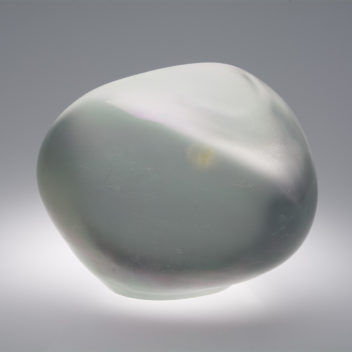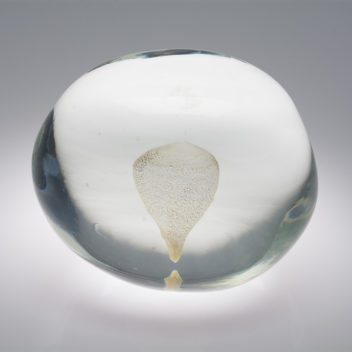
Patrizia Molinari 1948–
Born in Senigallia, Patrizia Molinari studied Modern Literature and Languages and Foreign Contemporary Literature at the University of Bologna. She received her Doctorate in Fine Arts at Urbino University. She started painting in 1974, researching the path of white and monochrome, and studying their interaction with light. Soon, light itself became the substance she chose to work with. She designed sculptures made with fiber optics and gun-light or glass, to her the materials closest conceptually to light itself. She designed huge installations of industrial glass—as big as 50 square meters—resting the sculptures on cutting edge splinters or placing them on the ceiling where they are then reflected in mirrors surrounded by glass-debris. Her work in Murano with Vetreria Campanella using the lost-wax process produced great projects including installations at Palazzo Ducale for Venezia Aperto Vetro 1998 and the Biennale of Venice 2001. Her series Sassi Segreti has been exhibited in Italy and London. She is renowned for these small-size Murano glass sculptures blown at canna volante, which are published in many glass books. Her work is part of the collection of major museums including the Museo Nazionale di Murano, which houses her masterpiece Mare Nostrum. Molinari won three first prizes in Open National Competitions with her glass fountains projects. She has exhibited in Italy, Europe, the United Arab Emirates, and the United States. Her obelisk of steel and gun-light, Towards Space, rests in Rome. She currently lives and works in Rome, where she has been the Chair of History of Fine Arts at the Academy of Fine Arts since 1976.

